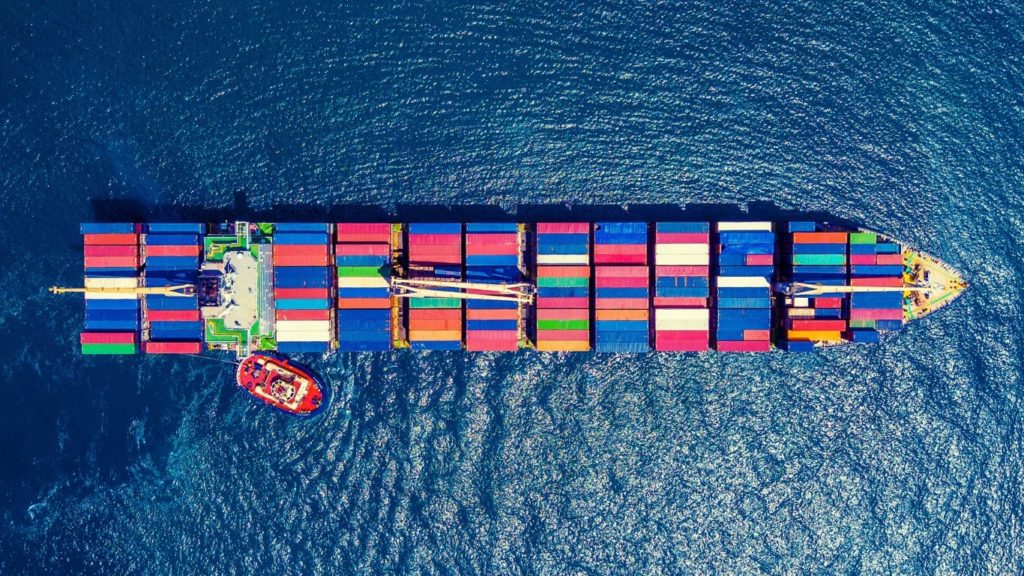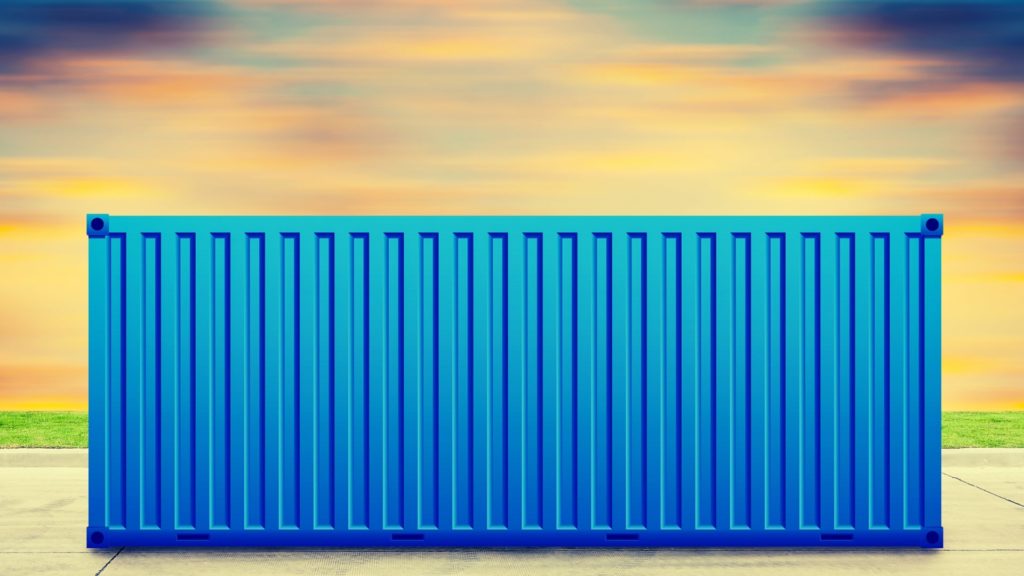
For ecommerce companies and other international vendors, container shipping is one of the most effective, and economical ways to transport cargo between locations. The evolving popularity of online shopping among both B2C and B2B companies has led to a massive increase in the number of containers shipped worldwide, using both LCL and FCL shipping methods. In fact, by the end of 2023, deliveries in the container shipping landscape are expected to increase to 746,000 TEUs.
However, while the use of containers in logistics might be nothing new to modern brands, many new companies branching into the international landscape can struggle with choosing the right container and shipping method.
Today, we’re taking a closer look at some of the most common container options, their capacity, and other features, to help you select the right solution for your company.
What is a Shipping Container?
A shipping container is a large, standardized metal box used to store and transport goods domestically and internationally. They are designed to be moved seamlessly between different modes of transport -from ship, to rail, to truck – without unloading the contents. Their use has revolutionized cargo shipping, making it much more efficient and cost-effective.
Container Capacity: Common Container Sizes and Types

The right container for your logistics needs can vary depending on a number of factors, from what kind of products you’re transporting, to whether you want to use LCL or FCL shipping strategies. With LCL (Less Than Container Load) shipping, the capacity of a container is less important, as you’re only using a fraction of the space available alongside other businesses.
With (FCL) Full Container Load shipping, you hire exclusive use of a container. This means purchasing a container that’s too large could mean you waste money on space you don’t need.
While there are many different types of freight containers and shipping solutions available, some of the most common include:
1. Dry Containers
Dry containers are called “Dry” because they don’t contain any features that allow for temperature and atmosphere control. They’re basic containers usually leveraged for the shipment of clothes, toys, and other products not affected by temperature.
Thanks to their versatility (and affordability) dry containers are the most popular type of container in the world. In fact, 96.6 million tons of dry containers were shipped to the UK in 2020. Standard capacity options for dry containers include:
- 20-foot containers (1 TEU): Among the most commonly used containers for the shipment of goods via ocean freight, 20-foot containers are ideal for shipping materials, metal, paper, steel coils, cement, and other heavy items.
- 40–foot containers (1FFE): Another common choice, 40-foot dry containers are common for carrying and storing cargo that takes up a lot of space, such as furniture, cotton, or steel pipes. They’re not often used for extremely heavy products.
- 40 High Cube Container (40HC): Intended for lightweight cargo, 40HC containers are taller, so they can accommodate more cargo. However, they do have weight limitations for each container.
2. Refrigerated Containers
Refrigerated containers, as the name suggests, are containers that include technology or solutions that allow for precise temperature control. They’re most common in industries like food and beverage, or the medical landscape. Refrigerated containers are often more expensive to hire, but they can be essential for preserving perishable goods.
Similar to dry containers, refrigerated containers are available in various sizes, including the standard 20-foot, 40-foot, and 40HC options. There are also some vendors who offer 45 HC containers, popular among large exporters and fans of LCL shipping.
Companies can also access specialist styles of refrigerated containers, such as the “controlled atmosphere” container, which allows comprehensive control over the conditions within the cargo container, to help preserve and improve the shelf-life of goods being transported over long distances.
3. Special Dimension Shipping Containers
Though dry and refrigerated containers are some of the most common options in the freight shipping landscape, there are more “specialized” solutions available for specific use cases. These containers are carefully crafted to address the needs of certain products. Options include:
- Open-top containers: Intended for cargo that takes up more vertical space than that available in standard containers, open-top containers aren’t fastened on the top. This allows for cargo to be added to the container from the air, using a crane.
- Flat rack containers: Flat racks are ideal for shipping over-sized or heavier goods, such as construction materials, yachts, and heavy machinery.
- Platform containers: Often used for unusually sized or shaped cargo, platform containers are ideal for products that wouldn’t fit in a standard shipping container.
- Transportation tanks: Intended for the shipment of non-corrosive liquids, transportable tanks are suitable for the movement and preservation of free-flowing liquid.
Here is a comparison of different shipping containers:
| Container Type | Dimensions (L x W x H, feet) | Capacity (cubic feet) |
|---|---|---|
| 20-foot Standard | 20 x 8 x 8.5 | 1,172 |
| 40-foot Standard | 40 x 8 x 8.5 | 2,390 |
| 40-foot High Cube | 40 x 8 x 9.5 | 2,694 |
| 20-foot Open Top | 20 x 8 x 8.5 | 1,136 |
| 40-foot Open Top | 40 x 8 x 8.5 | 2,350 |
| 20-foot Reefer | 20 x 8 x 8.5 | 1,000 |
| 40-foot Reefer | 40 x 8 x 8.5 | 2,200 |
Points to Consider When Choosing a Container
As mentioned above, the right container for your needs can vary depending on the shipping method you’re using, and the products you want to transport. Choosing the right container will help you provide your customers with free shipping and related perks, boosting your business. As well as considering the capacity of each container, you’ll also need to think about factors like:
- Container height: The average shipping container is usually around 8 feet and 6 inches high. However, this can increase depending on the shipping solution you choose. Open-top containers may be necessary for particularly complex or large products.
- Container characteristics: Different containers are specifically intended for certain types of products. For instance, 20-foot dry containers are excellent for heavy items, while refrigerated containers are excellent for food, beverages, and medical products.
- Weight limits per country: When shipping goods internationally, it’s important to be aware of the weight restrictions imposed by different countries. For instance, in America, no container can be more than 20 feet long, and 48 tons in weight.
- Packaging elements: When choosing the right container, it’s important to be aware not just of the size of your products, but the amount of space packaging will take up. High-value products wrapped in bubble wrap and other protective materials will take up more shipping space.
- Costs: Certain types of containers can cost more than others. For instance, a 20-foot refrigerated container may cost more to hire than a 40-foot dry container, depending on the logistics partner you work with. You’ll also need to consider how pricing is calculated for your shipment depending on whether you’re using FCL or LCL shipping
Mastering Container Shipping
Choosing the right type of container and shipping method for your company can be one of the most complex parts of handling international logistics. There are many different factors that can influence which container is best for your products.
If you’re struggling to choose the right solution, it’s worth seeking the help of a freight forwarder or logistics partner that can walk you through the steps of choosing the ideal container. They’ll be able to provide insights on the pros and cons of each option, and help you choose a solution that matches your budget and specific needs.